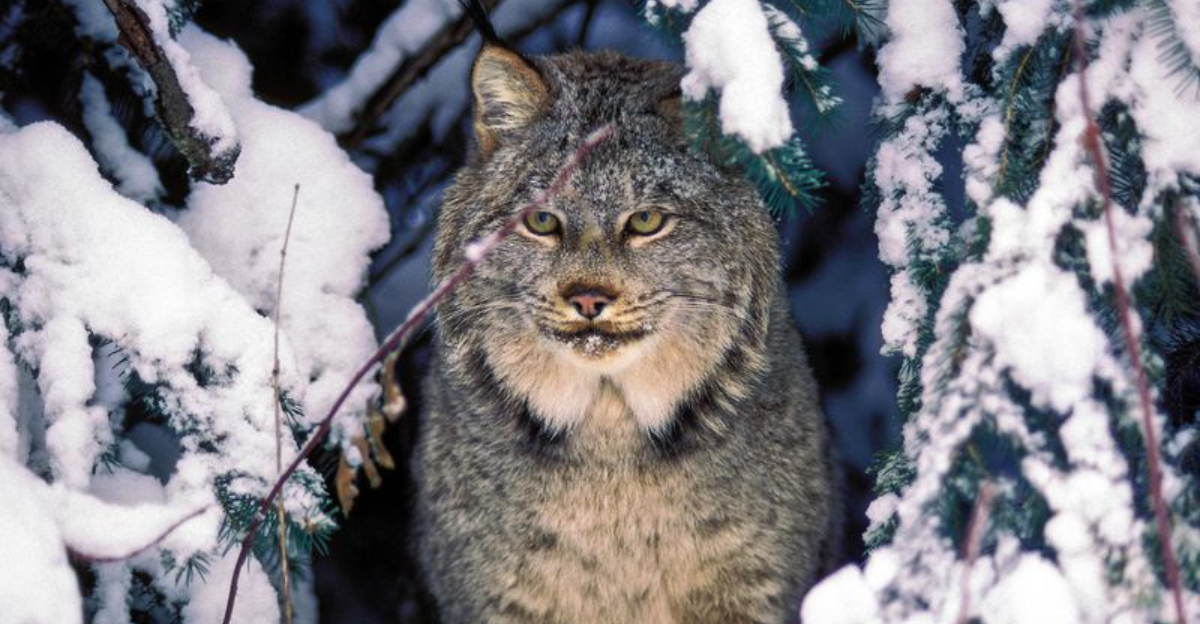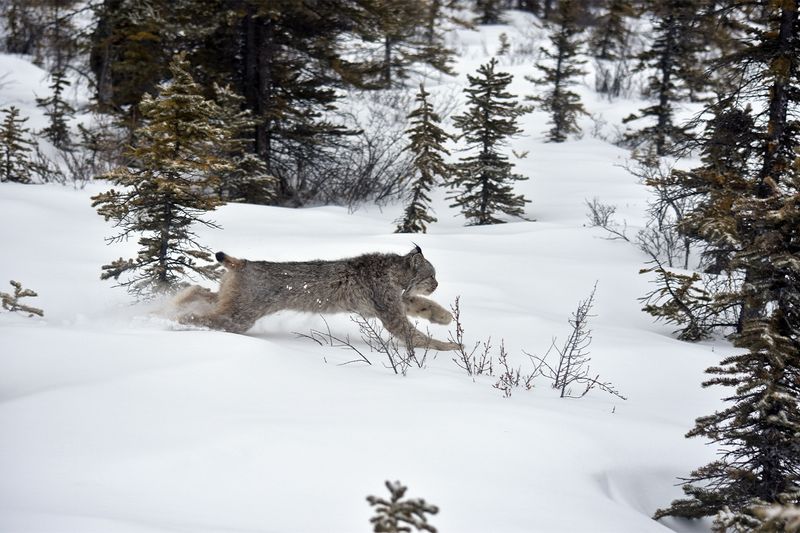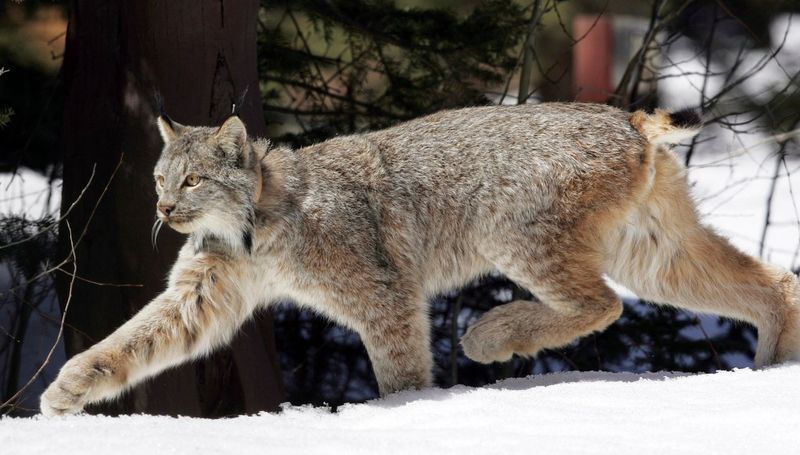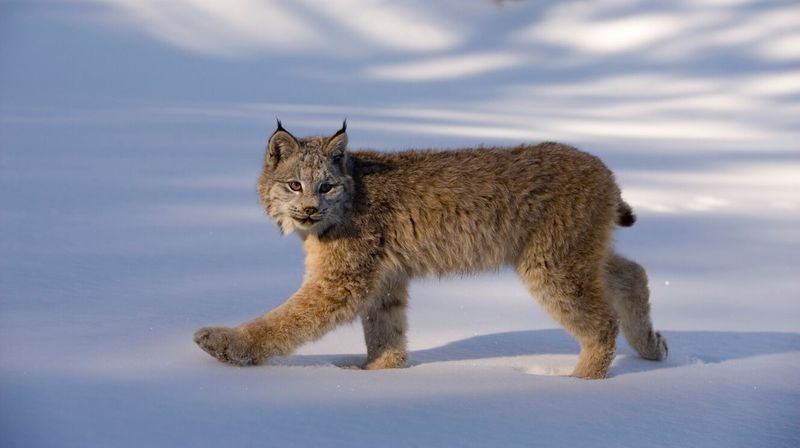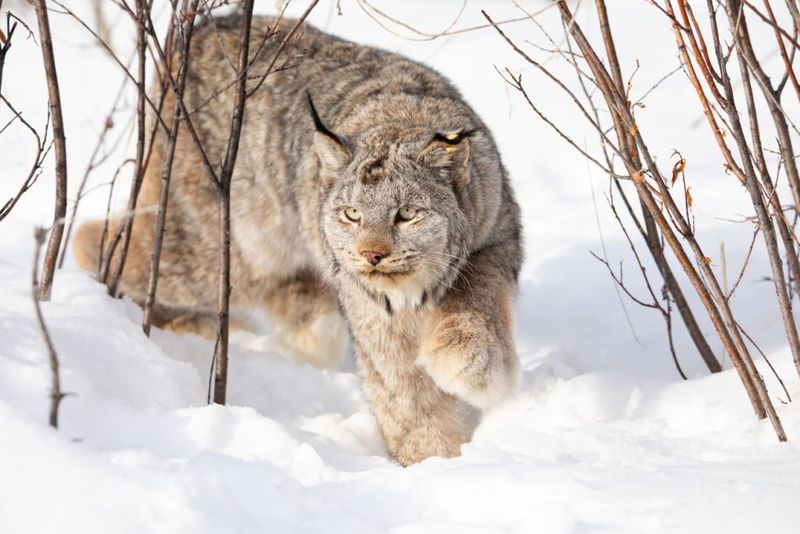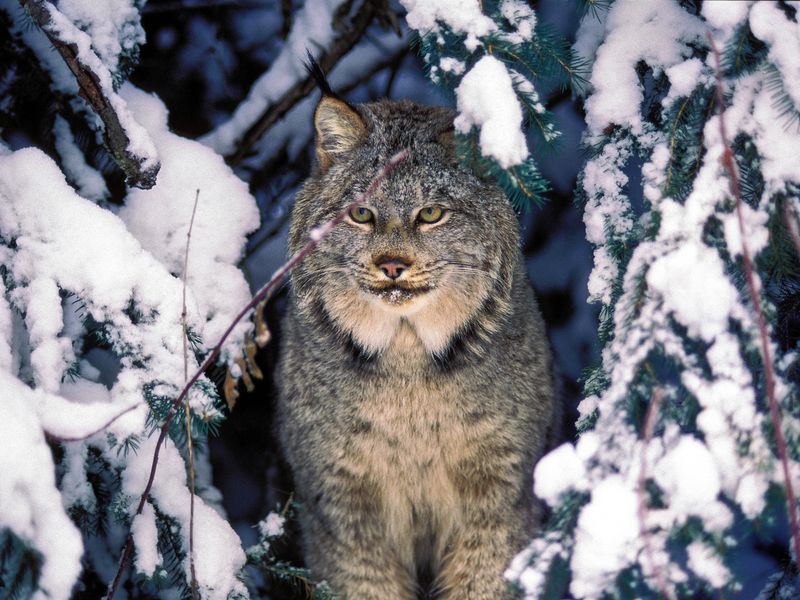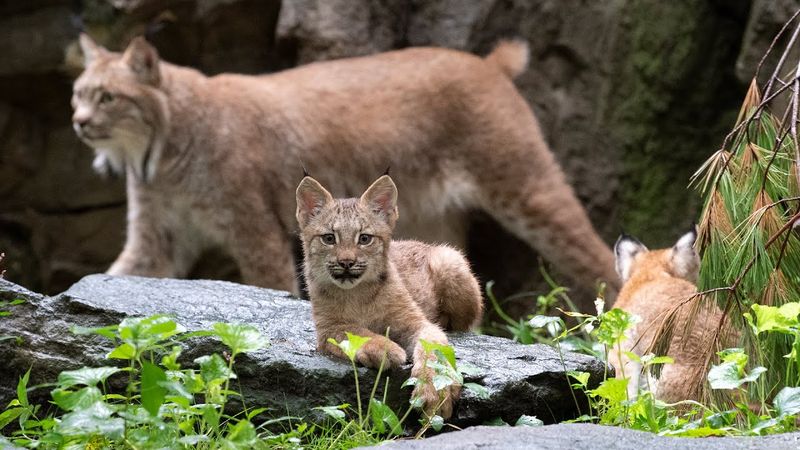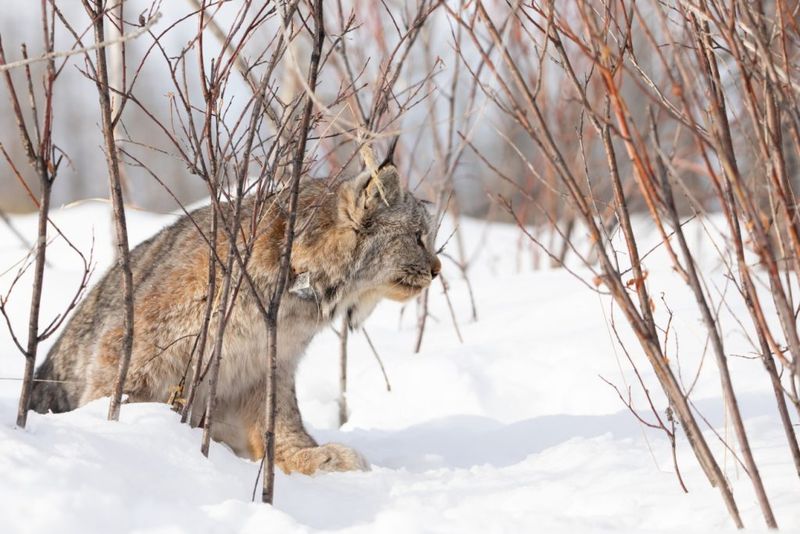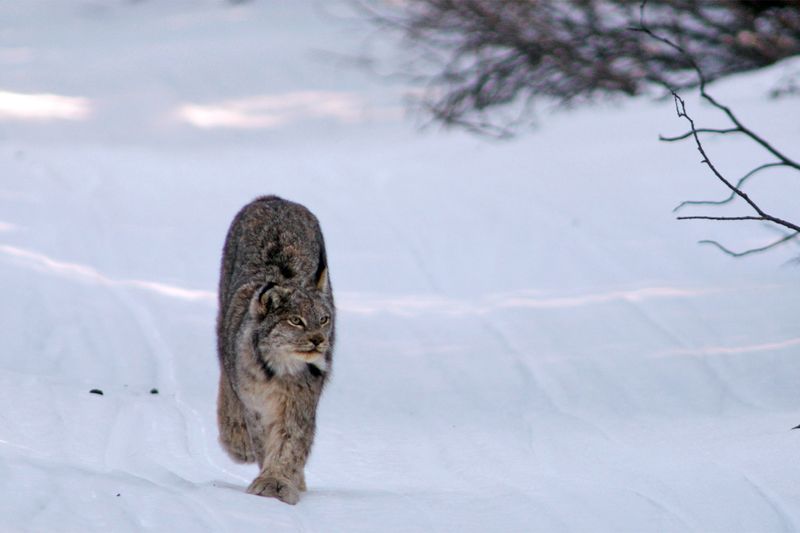📖 Table of Content:
The lynx, a secretive wild cat with tufted ears and massive paws, has made a surprising comeback in American forests. After nearly disappearing due to habitat loss and hunting, these elusive predators are slowly reclaiming their territory across several states. Their return marks an important success story in wildlife conservation efforts that many Americans don’t even know is happening right under their noses.
1. Snowshoe Hare Specialists
Lynx have evolved an extraordinary relationship with snowshoe hares, creating one of nature’s most fascinating predator-prey connections. About 90% of a lynx’s diet consists of these rabbits, making them highly specialized hunters.
The population cycles of these two species are dramatically linked. When hare numbers boom, lynx populations follow suit about a year later. When hares crash, lynx numbers decline shortly after.
This dependency explains why lynx need vast territories of healthy forest to survive – they must follow their primary food source wherever it leads them.
2. Colorado’s Reintroduction Success
Since 1999, Colorado has been quietly restoring its lynx population by releasing 218 cats from Canada and Alaska into its rugged high country. Initially met with doubt by conservationists, this ambitious reintroduction has become one of the most celebrated wildlife victories.
Against the odds, these cats adapted beautifully. By 2006, researchers confirmed the first Colorado-born lynx kittens, proving the population could sustain itself. Today, an estimated 150-250 lynx roam Colorado’s mountains.
The program’s success demonstrates how thoughtful reintroduction efforts can restore species to their historical ranges when given proper protection and habitat.
3. Built for Harsh Winters
Winter conditions that would threaten most animals are precisely what lynx are built for. Their massive paws act like natural snowshoes, distributing their weight across soft snow. This adaptation gives them a hunting advantage over competitors like coyotes, who sink into deep powder.
Their thick, silvery-gray fur provides exceptional insulation, with hair tips that can reach 300% longer in winter. This dense coat keeps them comfortable even in temperatures dropping to -40°F.
Lynx actually thrive during the harshest winter months when deep snow makes hunting easier for them while hampering other predators.
4. Conservation Status Comeback
Facing drastic population drops in the 1970s from trapping, habitat destruction, and prey shortages, lynx were placed under federal protection in 2000 as a threatened species throughout the lower 48 states.
This protection, combined with reintroduction efforts and forest management practices, has slowly reversed their decline. Maine now supports a stable population of 500-1,000 lynx – the largest in the lower 48 states.
Washington, Minnesota, and Montana have also seen encouraging population increases, though challenges remain in connecting these isolated groups to ensure genetic diversity.
5. Ghost Cats of the North
Known as “ghost cats” for their unmatched stealth, lynx blend seamlessly into the wild. Their secretive nature means that even dedicated scientists may spend years observing without ever seeing more than a brief glimpse.
Their thick fur matches the dappled light of forests perfectly, and they move with silent precision through deep snow thanks to their oversized, snowshoe-like paws. These adaptations make them nearly impossible to spot.
Most lynx sightings happen by pure chance, often lasting just seconds before the cat vanishes like a forest spirit.
6. Bizarre Family Dynamics
Female lynx raise their kittens with a fascinating mix of tenderness and tough love. Mothers typically give birth to 2-4 kittens in secluded dens, often in hollow logs or rock crevices. For the first few weeks, she rarely leaves their side.
By autumn, the training begins. Mother lynx bring live, injured prey to teach their kittens hunting skills through practice. This apprenticeship continues through winter as kittens follow their mother’s massive tracks in the snow.
Come spring, the mother abruptly forces her nearly grown offspring to leave, ensuring they establish their own territories before she begins the cycle again.
7. Climate Change Challenges
Rising temperatures pose serious threats to lynx survival across America. These cats evolved specifically for cold, snowy environments – conditions rapidly changing due to global warming. Shorter, milder winters reduce the lynx’s competitive advantage over other predators.
Declining snowpack affects both lynx mobility and snowshoe hare populations. Studies show hares struggle to adapt their seasonal coat changes to increasingly unpredictable snow patterns, making them more vulnerable to predation.
Conservation efforts now focus on identifying and protecting “climate refugia” – areas predicted to maintain suitable lynx habitat even as surrounding regions warm.
8. Seeing Signs Without Seeing Cats
While spotting an actual lynx remains extremely rare, learning to identify their distinctive signs can transform a forest hike. Their tracks tell stories – enormous, fuzzy-looking paw prints (up to 3.75 inches wide) often appearing in straight, deliberate lines through deep snow.
Lynx leave unusual evidence at kill sites, too. Unlike messy coyotes, they neatly pluck fur from prey, creating distinctive piles of hair next to consumed carcasses.
Their scat resembles segmented tubes containing mostly hair, and they mark territory with scrapes in soil or snow – small calling cards that reveal their presence even when the cats themselves remain invisible.
